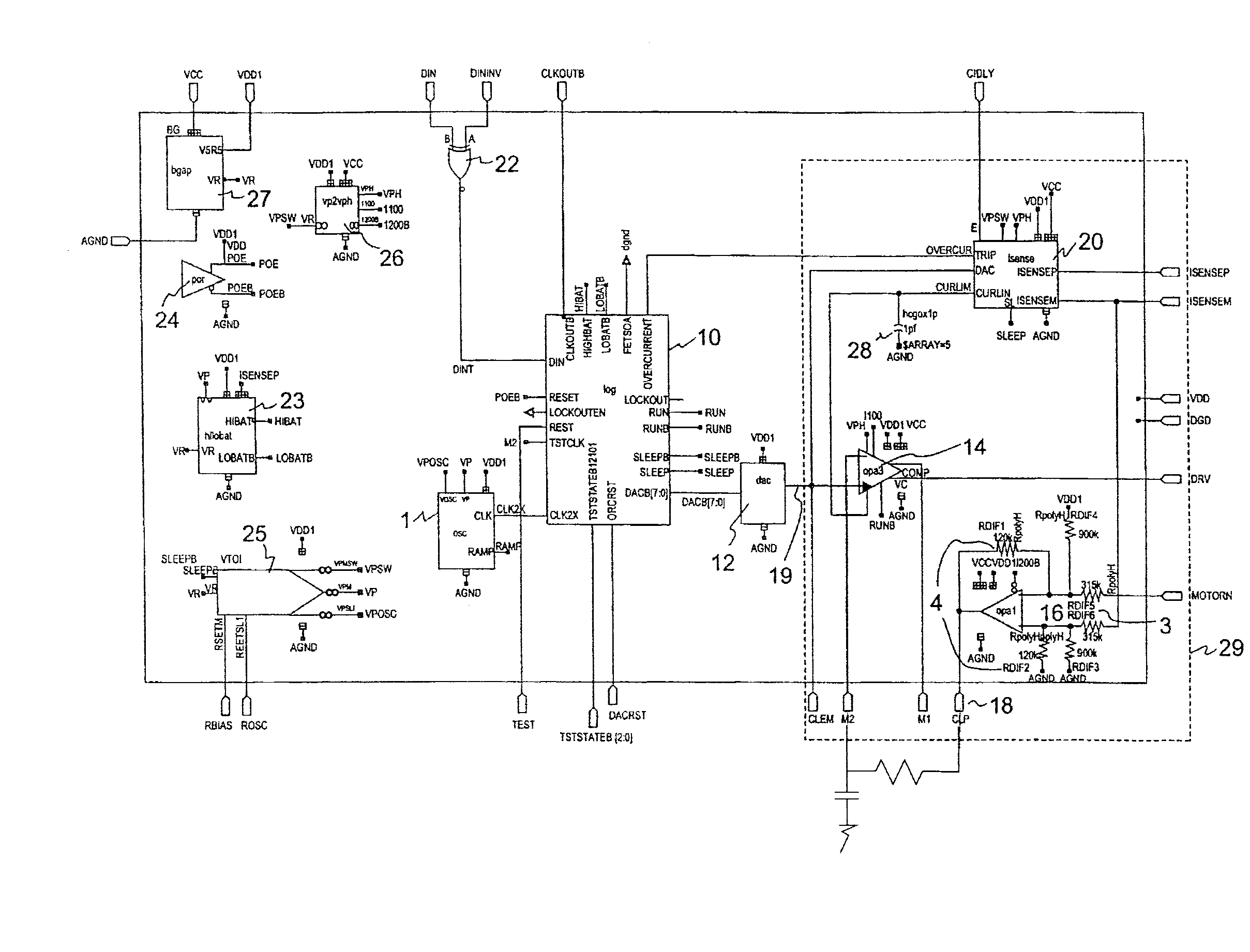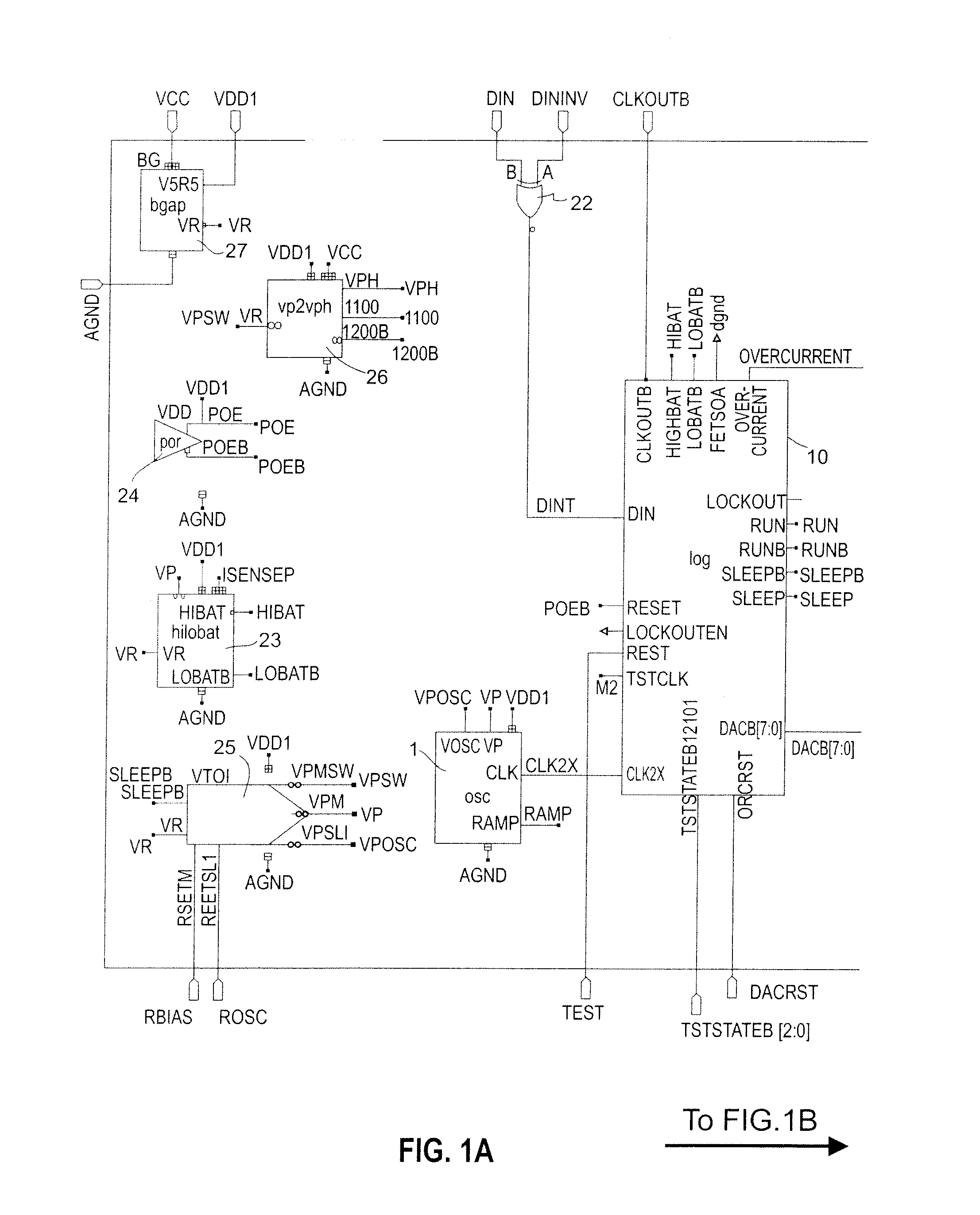Linear electric motor controller and system for providing linear control
a technology of linear control and electric motor, which is applied in the direction of automatic controllers, logic circuits, dynamo-electric machines, etc., can solve the problems of introducing a choppy control quality, relatively inaccurate control of electric motors, and choppy or stepwise levels of control, so as to reduce vehicle size, increase fuel economy, and reduce weigh
- Summary
- Abstract
- Description
- Claims
- Application Information
AI Technical Summary
Benefits of technology
Problems solved by technology
Method used
Image
Examples
Embodiment Construction
[0031] In accordance with a preferred embodiment of the invention, a method and system is provided to enable a linear electric motor controller that is smaller, lighter in weight, or both, compared to switch-mode controllers of the prior art. By packaging the linear controller of an embodiment of the current invention in an integrated circuit, additional weight and / or size savings can be realized. It has now been discovered that such linear controllers can be prepared by advantageously including an internal feedback mechanism to monitor the voltage and thus speed of the controlled motor, which can provide superior control compared to the switch mode, or PWM, type controller. The inclusion of at least one internal feedback mechanism facilitates a decreased latency between detection and correction of deviations of the controlled electric motor speed. This can advantageously minimize control latency to facilitate more accurate control of the electric motor speed.
[0032] In one embodime...
PUM
 Login to View More
Login to View More Abstract
Description
Claims
Application Information
 Login to View More
Login to View More - R&D
- Intellectual Property
- Life Sciences
- Materials
- Tech Scout
- Unparalleled Data Quality
- Higher Quality Content
- 60% Fewer Hallucinations
Browse by: Latest US Patents, China's latest patents, Technical Efficacy Thesaurus, Application Domain, Technology Topic, Popular Technical Reports.
© 2025 PatSnap. All rights reserved.Legal|Privacy policy|Modern Slavery Act Transparency Statement|Sitemap|About US| Contact US: help@patsnap.com



